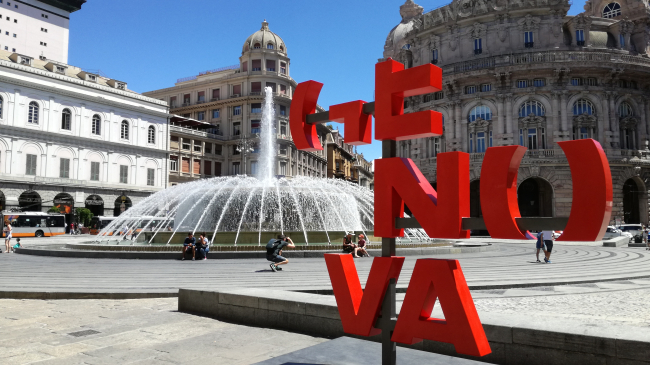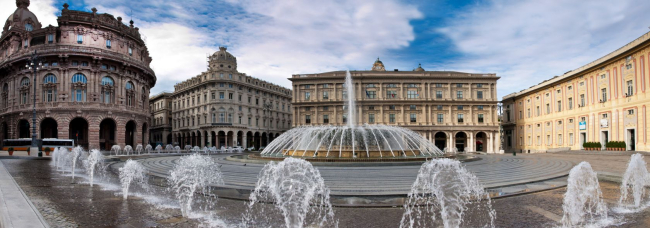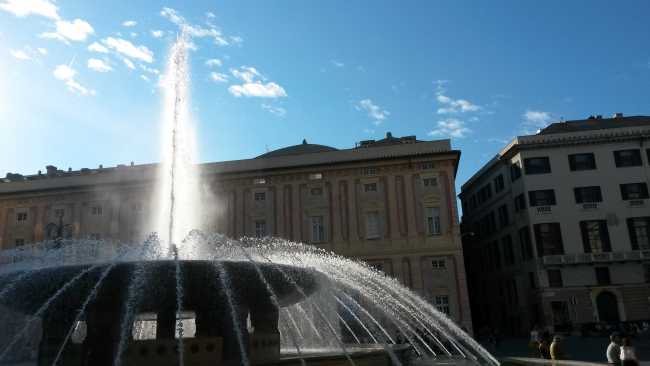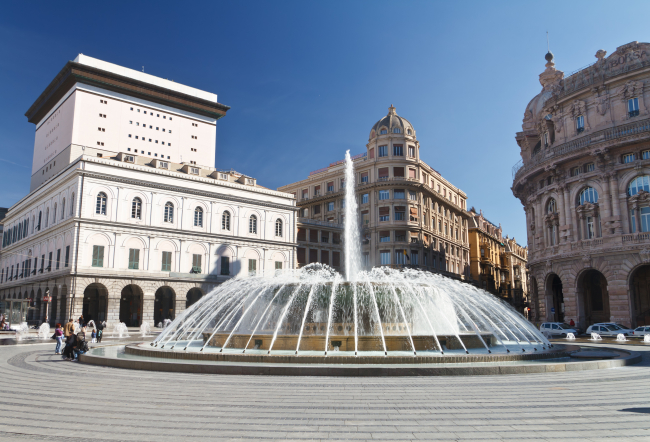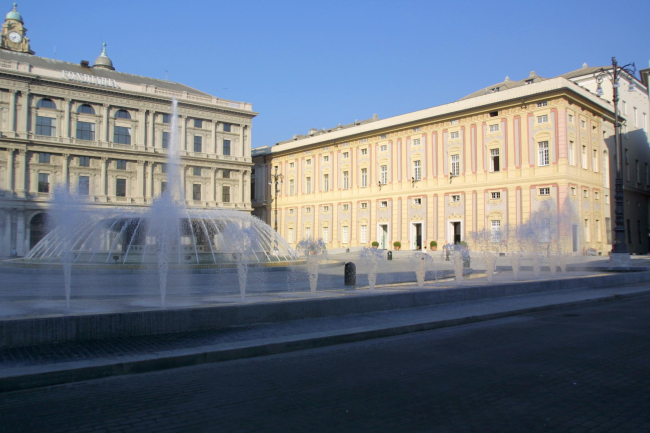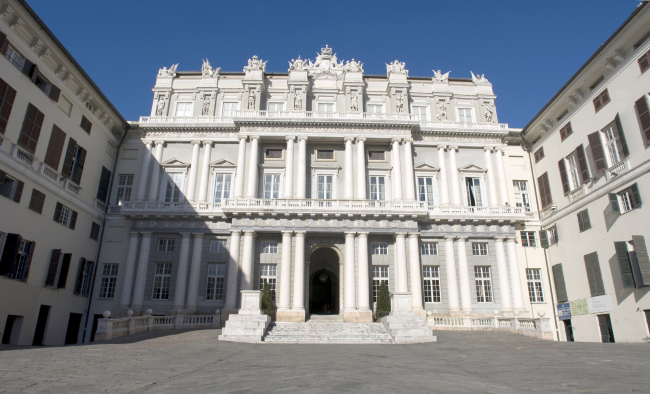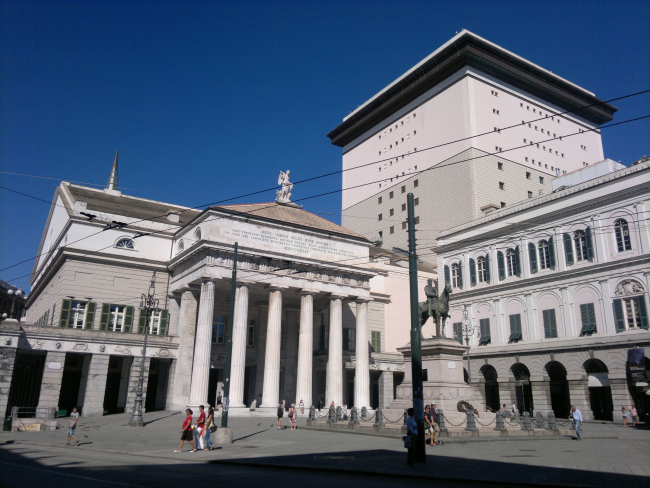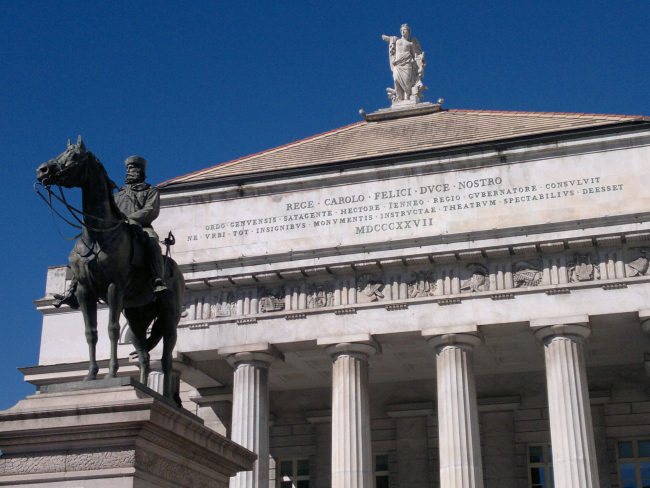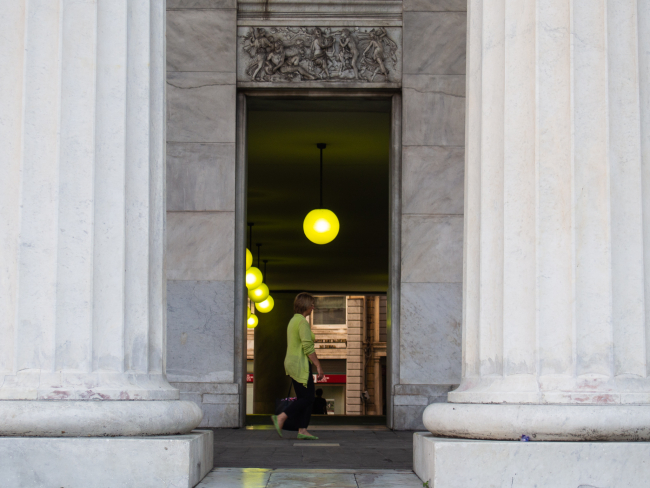The heart of Genoa. Discovering Piazza De Ferrari
The heart of Genoa. Discovering Piazza De Ferrari
The heart of Genoa. Because every city has one and Piazza De Ferrari is the heart of Genoa. Where the Genoese have always met and where every story begins. Even for those who are not Genoese.
A commercial, financial and economic hub, Piazza De Ferrari is the main meeting place and reference point for the most important events in the city’s life. Located in the Portoria district, one of the “sestieri” (neighbourhoods) into which the ancient city of Genoa was divided, Piazza De Ferrari is the epicentre of Genoese life. Today it is a kind of breakwater marking the divide between two “worlds”, sometimes as different as day and night. The 19th-century centre, home to the city’s financial district, offices, businesses and shopping, and the historic centre, a labyrinth of alleyways and small squares that descend towards the sea, where young people congregate to enjoy the atmosphere and socialise late into the night.
The square, named after Raffaele De Ferrari, Duca di Galliera, a politician and banker who in 1875 donated a considerable sum for the enlargement of the port, has an irregular shape, this is due to later urban planning changes resulting in the unification of two adjacent but “urbanistically” dissimilar areas, as can be seen from the different architectural styles of the buildings. Piazza De Ferrari is in fact the meeting point between the old city and the “modern” Art Nouveau area of Via XX Settembre, one of the city’s main streets that converges on the square.
It is at the very heart of the city that Genoa changes face. The charming and characteristic architecture of the old town, where the scents of Ligurian cuisine - such as focaccia and freshly fried fish - mingle with the smell of the sea, to then give way to an elegant widening where the sunlight and the splendour of the buildings dominates the scene.
In the centre of this large square stands a monumental circular bronze fountain, built in 1936 by the architect Cesare Crosa di Vergagni and donated by the Piaggio family. The fountain was enriched in 2001 with additional water features.
Piazza De Ferrari is bordered along its entire perimeter by majestic architectural masterpieces.
On one side of the square there is the Palazzo della Borsa, one of the finest examples of Genoese Liberty style, built by the engineers Dario Carbone and Amedeo Pieragostini between 1906 and 1912, while opposite stands the secondary entrance to Palazzo Ducale, the entrance was built at the same time as the construction of the square, the Palazzo was the original seat of the Doge's Office of the ancient Republic. On the other two sides (the widest), stand the Palazzo della Regione, originally the Palazzo della Navigazione Generale Italiana, and facing it the Teatro Carlo Felice, Genoa's opera house, which links Piazza De Ferrari to Galleria Mazzini.
It was the King of Sardinia, Carlo Felice, who wanted Genoa to have a theatre for opera, a very popular genre at the time. Entrusted to Carlo Barabino, the “new” building was located in the area of Piazza San Domenico, following the demolition of the old medieval monastery. The inauguration took place in 1828 with the opera "Bianca e Fernando" by Vincenzo Bellini. Severely damaged by bombing during the Second World War - so much so that for several decades only the perimeter walls remained standing - the “Carlo Felice” was rebuilt to a design by Ignazio Gardella between 1985 and 1991, taking on its cirrent appearance. All that remains of the original Teatro Carlo Felice are the columns, the pronaos, the Latin inscription and the terrace overlooking Via XXV Aprile.
The “Carlo Felice” has a technological heart, conceived by stage designer Enzo Frigerio, which makes it one of the most advanced in Europe. Every detail of the theatre has been designed with particular attention to acoustics: from the seats to the balconies, from the entrance doors to the stairways: all the elements have been designed and built with particular attention to creating the ideal listening conditions.
The main hall of the “Teatro” can seat thousand people, it has a 63-metre stage tower and four movable stages, one of which is about 600 square metres wide. A second hall with 200 seats is used for conventions, conferences and other activities in addition to the theatre's normal programme.
With its highly skilled permanent orchestra and choir, the Teatro Carlo Felice hosts, and has hosted, many of the worlds most important conductors, becoming one of the most famous opera houses in the world.

